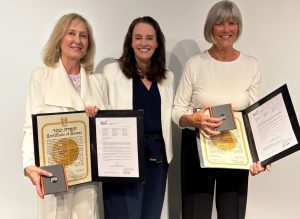The settlement of a dispute between the estate of German-born Jewish art dealer Max Stern of Montreal and a Munich museum over a painting’s ownership is being hailed as a “watershed moment” in the continuing struggle for the restitution of Nazi-looted art.
Germany’s Advisory Commission on the Return of Cultural Property Seized as a Result of Nazi Persecution, Especially Jewish Property has decided that the Bavarian state-owned Neue Pinakothek museum should return Uhlans on the March by 19th-century German painter Hans von Marées to the Max and Iris Stern Foundation.
But the official body is placing unprecedented conditions on that return, which was opposed by a minority of the commission’s members.
The commission recognized that Stern, who owned an art gallery in Duesseldorf, was “personally and professionally subjected to persecution” by the Nazi regime, “which resulted in the loss of this painting.”
But before the museum hands over the painting, the Stern foundation had to agree not to sell it for 10 years, in case evidence emerges that there was a previous Nazi-era owner of the painting who was also a victim of persecution. The foundation is also required to grant access to all the documentation it holds, in the event that new findings contradict the information that was presented to the commission.
Max Stern Art Restitution Project co-ordinator Clarence Epstein said that the Stern foundation “welcomes these conditions, which are consistent with its transparent practices in claim settlement spanning nearly 20 years.”
The dissenters, whose opinion was published in the commission report, sided with the museum, which argued that insufficient evidence has been produced that Stern was forced to sell the painting as a result of Nazi persecution.
The museum argued that there is no proof that the 1936 sale was out of the ordinary. It proposed that Stern might never have owned the painting, but rather held it on consignment.
Uhlans on the March was bought by the Neue Pinakothek in 1986. Von Marées is considered one of the greatest of the German Romantic artists.
READ: THE HOLOCAUST AND RESTITUTION OF CONFISCATED ART – PART 4
New York State’s Holocaust Claims Processing Office (HCPO) was instrumental in persuading the commission that the Stern estate is the rightful owner of the work.
“The two conflicting positions of the commission members expose the complexity of addressing claims for looted art and emphasize the need for greater understanding of the history of Nazi persecution and the mechanics of dispossession,” the HCPO stated on Sept. 12.
A division of the Department of Financial Services, the HCPO was created in 1997 to help Holocaust survivors and their heirs recover lost assets, including artwork that was stolen or sold under duress.
Epstein explained that the restitution project is hailing this as a “landmark decision,” despite the conditions attached, because it is “a formal acknowledgement by the commission of an earlier persecution narrative,” of the prewar persecution of Jews by the Nazi regime.
He said the project will “re-evaluate all business transactions of Stern’s gallery starting from 1933 and substantially supplement its current list of claimable works.”
The prominent gallery was founded in 1913 by Stern’s father, Julius, who died in 1934.
“With this decision, and having successfully recovered works in museums of Duesseldorf, Stuttgart and Weinsberg, we are immediately moving forward with several additional claims against German museums,” Epstein said.
A wartime internee, Stern was deported to Canada from Britain in 1941, as were many Jewish German and Austrian nationals. After the war, he became one of Canada’s most important art dealers, as the director and then owner of the Dominion Gallery. He died childless in 1987.
The restitution project acknowledges “the invaluable assistance” of the HCPO, which made arguments before the commission. Epstein said at least two-thirds of the 10-member commission voted in favour of the conditional restitution.
A total of 21 works have now been returned to the estate since the restitution project, which is based at Concordia University, was launched in 2002. Concordia, McGill University and the Hebrew University of Jerusalem are Stern’s principal heirs.
The painting in dispute was sold in June 1936, according to the claim. In 1937, Stern was forced to liquidate his remaining inventory of more than 400 pieces at auction for a fraction of their value. He fled Germany in 1938 for Paris and later Britain.
The Stern Co-operation Project has recently been created, bringing together interested Canadian, German and Israeli experts to foster scholarly research on Stern and his family. It’s based at the Zentralinstitut für Kunstgeschichte in Munich.






